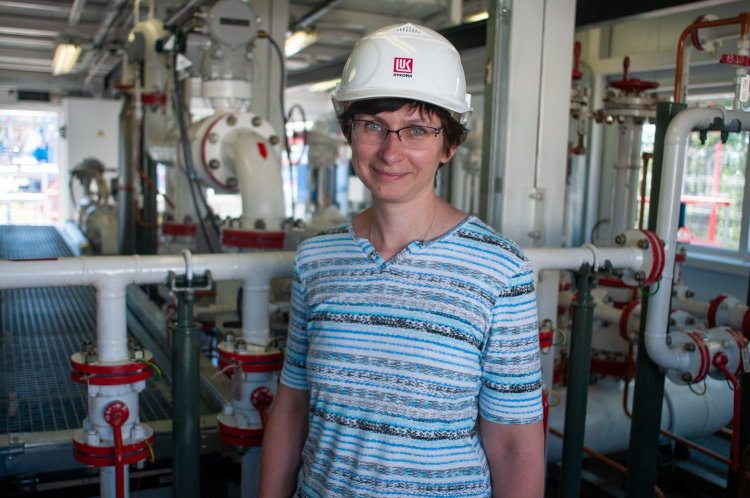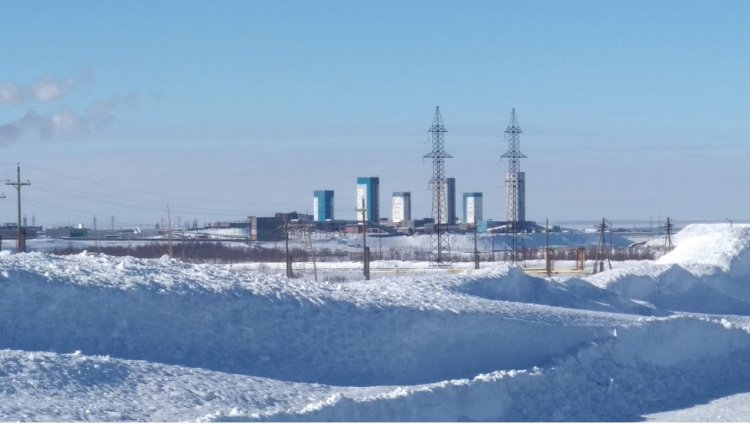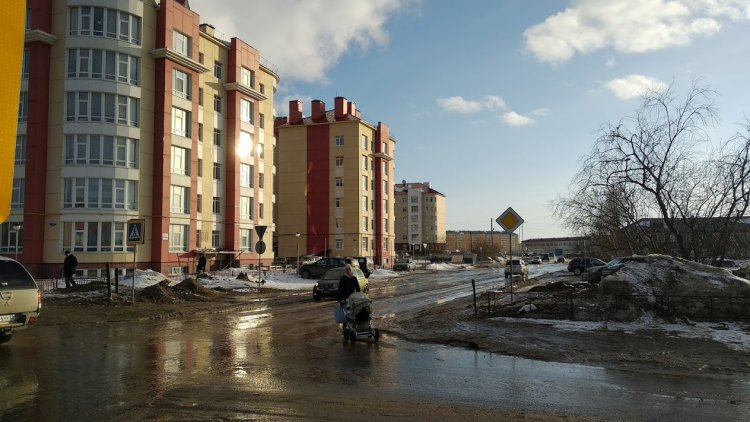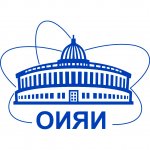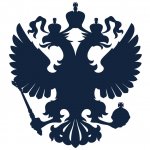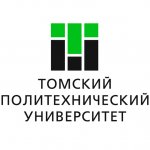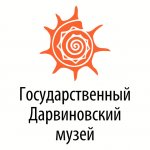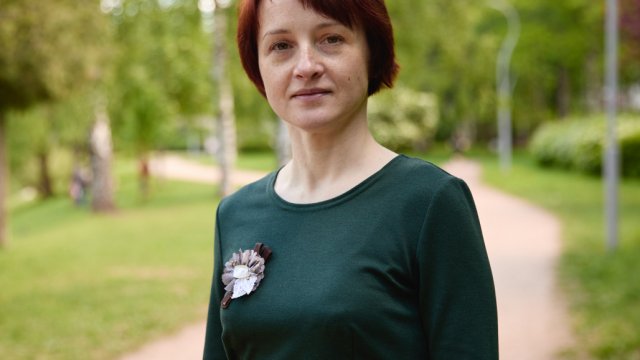The exploration of Arctic Region, territory rich in mineral resources, is a key global trend today. We have discussed this topic with specialist in the Arctic Nadezhda Zamyatina, candidate of geography, associate professor at the Geographic Faculty of Moscow State University, deputy Director General at the Institute of Regional Consulting.
- Nadezhda Yuriyevna, did the Arctic exploration begin in the Soviet time or earlier?
Speaking about the Arctic in general, we should mean the international Arctic, so the reference to Soviet time is not entirely right. Strictly speaking, indigenous peoples started the Arctic exploration. If we take our country, there was exploration of the Arctic by Russians. This process was active in 15th-17th centuries. However, the Pomors (Russian dwellers of the White Sea coast) tend to inhabit the Arctic territory of Russia’s European part. It happened much earlier than the Soviet time. The town of Pustozersk was founded at a distance of 20 km from the place where the city of Naryan-Mar was later built. By the way, Naryan-Mar dates its history back to a timber mill of pre-revolutionary period. Murmansk was also founded before the revolution. Moreover, Russians have been living in Taymyr and Chukotka for centuries.
If we drop this early stage of the Arctic exploration, I would say that the Arctic exploration in its modern industrial form with construction of large cities, railways and industry began in late 19th – early 20th century, and was related to the global industrial trend and, say, the chase for mineral resources. Modern economy came to the Arctic for resources, and Russians started exploring the Arctic in step with foreign countries. How did the industrialization come to the Arctic Region? First of all, people came here for gold. The gold rush that started at the border of American Alaska and Canadian Yukon was bringing to life news cities and railroads, as well as caused a dramatic growth in population. The iron rush in the north of Sweden took place almost simultaneously and in similar way. So, the exploration of Scandinavian Arctic began. In Russia, the breakthrough in exploration of the Arctic happened before the revolution, during the First World War. At that time, the railroad to Murmansk was built; while strategic military port Aleksandrovsk (a closed administrative-territorial unit today) was founded a bit earlier. However, the settlement of Kola (a suburb of Murmansk today) inhabited by the Pomors had existed here since olden times. Thus, the colonization of this region took place in several waves, and early 20th century is the period of mass settlement. The railroad was built here ahead of schedule.
That is why the first breakthrough in the Arctic exploration took place before the establishment of Soviet power. Nevertheless, the extent of exploration achieved in the Soviet time was absolutely unprecedented. Russian Arctic was far ahead of the Arctic region belonging to other countries in number of cities and population. It is true for the present time as well. If we take, say, gross industrial exploration, the process that took place in the Soviet time has no equals in the world.
- Now, we have entered a new stage – the re-exploration of the Arctic. What served as the driver of such interest?
I would again say that we go step in step with the world, as early 21st century is the period of overall interest in the Arctic. The strategies of development and exploration are adopted, the activity of the Arctic Council become more intensive. A for Russia, I would say that the process should be called coming back to the Arctic instead of re-exploration, as it happened after the country actually left the Far North in the 1990s, which led to collapse of our northern economy and depression that was heavier than in the country in general. The authorities started allocating funds, while Russia began pursuing more active foreign policy in the Arctic region. We see a new technological stage of the process – the exploration principles, equipment and settlement purpose are different. More attention is paid to rotation system of work which dominates in development of new deposits (however, it does not mean that we should turn the existing towns into rotation camps, as some people suggest today). The resurgence of interest in the Arctic region is important from political point of view.
Norilsk: Talnakh mines
- At present, the world is active in developing the technology of digital twins. Russian scientists are already working on creation of Baikal’ digital twin. Moreover, they declared the creation of a digital twin for the Northern Sea Route (NSR) during the Arctic Forum Week in 2020. How do you think it will affect the exploration of the region?I
t is a useful thing, yet the Northern Sea Route is a tremendous object. Our country’s territory is vast: it takes 8 hours by plane to cover this distance. The Northern Sea Route runs along the whole country’s territory. Just imagine the quantities of machinery to be used for creating a digital twin, as the information should come in real time. The most challenging problem in providing information about the Northern Sea Route lies in ice conditions. We need information as to where ships of different ice classes can go, what vessels should accompany them, how fast the cargo can be delivered, etc. Satellite images are not enough here. Ice reconnaissance is required. Before, it has been performed by brave polar pilots, while today the focus is made on using drones. The observations on microlevel are also required. Moreover, a lot of time is needed to cover the territory with detailed observation network. We will come to it sooner or later. At present, the Northern Sea Route suffers from the information shortage, so any advance in this respect is useful for economy: the costs drop, if we do not certainly take into account the expenses for creating the digital twin. It is a tremendous job similar to the work on creating a digital twin of the country in general. It is the most difficult part of the country from the viewpoint of information support.
- Today, the way to Artic becomes increasingly more open for different countries due to ice melting. What are further forecasts with regard to the Arctic Region development?
By various estimates, it is expected that the vessels can reach the destination without an icebreaker by 2050. It will mean a loss of monopoly for our country. Now, this is our line, and other countries have to come to agreement with us and pay for carry-through. Some forecasts say that by the mid-century the ships will be able travel northward of Russia’s territory, approximately in the region of the North Pole, which means the possibility of bypassing Russia while carrying cargoes through the Arctic Ocean. It will mean the loss of monopoly for us, as I have said. However, the ice is to remain in the short range (for 2030s), so the navigation along the Northern Sea Route will be a difficult enough task. The laying of route by modern icebreakers suggests a lot of efforts. It is a difficult and expensive task. New icebreakers of Leader type that are being built yet are expected to be capable of passing through the ice 4 meters thick. Yet, the rise in passing capacity means the increase in costs. It is not by chance that inexpensive goods were almost missing in the cargoes delivered along the Northern Sea Route in 1990s. The delivery of goods to the northern territories reduced dramatically almost stopped. Only the products of Norilsk Nickel remained, and later liquefied gas and oil added to them. This is all that is carried along the Northern Sea Route today, as the servicing of mainline is expensive. The freight of timber and other relatively inexpensive cargos carried along the NSR in Soviet time has become economically inefficient. Besides, though the modern machinery is very powerful, it is still difficult for the ships to comply with the schedule. In 2018, for instance, a vessel had to pass the winter in the area of Chukotka. Even with modern equipment being available, there are still a lot of problems. We cannot say so far that the situation will change for the better due to climate warming. Ice is a complex element which is costly to overcome. Looking ahead, I would say that there is an opinion of making the NSR passable being not worth the trouble, as the operation of it all the year round raises service costs dramatically. Actually, every new step on the way of ensuring the year-round and stable operation of NSR makes it increasingly more expensive. The Northern Sea Route tries to catch up with other marine mainlines which allow for delivery of goods just in time. Such a delivery is a challenging task in the Arctic. It is easier to deliver a vast amount of cargos once a year than use the NSR for regular shipping.
Photo presented by Nadezhda Zamyatina
- In one of your lectures you have stressed that “many countries have their own Arctic region, and it is a more international region than domestic territories.” What new players are there on this territory today?
Yes, new players have appeared in the Arctic Region. Among them, there are many European countries, including France which has invested in construction of LNG plants in Yamal. Italy is interested in Arctic. China having icebreakers of high enough class is very active in this region. Japan is interested in it. As for the Arctic countries, I would say that investors stand in a line for licensed sites in Greenland. Greenland is believed to be a new frontier of mankind, as the region is potentially rich in various mineral resources, and a sort of mess with regard to distribution of them is observed there. I say potentially, as so far these resources are only anticipated. That is why many countries take interest in obtaining a site in Greenland. It was not by chance that a question on selling it to the USA was raised several year ago, which caused indignation among the Danish public. However, it is really one of the potentially powerful sources as to various minerals – from oil and gas to rare earth metals.
- Russia’s strategy of Arctic development and exploration I highlighted in presidential Decree “On strategy of Russia’s Arctic area development and provision of national security for the period to 2035.” What are the forecasts with regard to Russia’s scientific presence in the Arctic Region?
– First, can we say that the foundation is laid for conducting research there? We can, as the foundation is laid. For instance, geological research becomes more intensive. I would say that this strategy embraces many areas. It contains many right things, and the paragraph devoted to intensifying the research looks strong enough, along with other ones, including the topic on the social development of Arctic cities. I would way that research is really one of the most important areas in Arctic exploration and development. Why? It laid the foundation for subsequent economic development. There are many unexplored areas in Arctic so far. If they are even explored, the respective technologies for development are missing. Say, we discover a deposit in the shelf area but have no technologies to develop it. Our colleagues, specialists in offshore oil production say: “There is no technology for extracting hydrocarbons in the area where they were discovered, and it is true not only for Russia alone.” That is why the commissioning of these deposits is postponed for both economic and technological reasons.
If we say about further exploration, development of the region including the extraction of mineral resources and environmental protection, we have work out the respective technologies, so further exploration of Arctic is impossible without science. This topic is very knowledge-intensive, and a very interesting link arises here: we often oppose innovation to extraction of hydrocarbons. The extraction of oil, especially in the Arctic region, is a very knowledge-intensive industry demanding serious scientific research. The research is also required for construction in permafrost conditions, maintaining the viability of cities and other areas. In particular, my topic is insufficiently substantiated with research data so far in my point of view. I mean the comprehensive development of cities and settlements in the Arctic. What should these settlements look like, how to overcome the difficulties including the ones in the sphere of social and humanitarian knowledge? People ought to feel comfortable not only with regard to warmth and light, but in respect of communication as well. They should not feel that it is distant periphery located far away from the mainland. We must develop a lot of social technologies which will later turn into special schemes of control over Arctic territories. This line of research, I would say, is falling behind the one devoted to natural processes taking place in the Arctic.
What else? Naturally, I should mention Arctic medicine and everything that is related to studying the climate, oceanology and permafrost. From the viewpoint of science, the topic is endless.
- You have mentioned demographic issues and the ones of building cities. What happens in the Arctic today from the viewpoint of demography?
The creation of cities in the Arctic Region is out of question today. The matter in question is about supporting the existing ones and their possible shrinkage.
As for demography in Arctic, it is predicated, as elsewhere, upon the sex-age structure of population above all, while the structure depends upon the living conditions. The population in Arctic is younger, as people use to leave the region at an elderly age, though there are many nuances here. Leaving the Far North is not recommended to the people who have lived in this region, for instance Norilsk, for a long time, because the organism has got accustomed to specific conditions of Arctic. The air in Arctic is oxygen-deficient, so the cardiovascular system starts functioning in a lightly different way with time. Thus, one should not move to the south with such system. Any resident of Norilsk will tell you that if a person leaves for the south at an elderly age, they are likely to die soon, as this person has Arctic organism. Therefore, many pensioners continue to live in Norilsk. I would say that they the truest patriot of Arctic. The youth prefer to settle in the areas where there are more cafes and better living conditions.
Photo presented by Nadezhda Zamyatina
Coming back to the youth, I should say that the birth rate in the Arctic is higher than in other regions as a rule. Let u not take the depressive area of the Arctic, the cities with dead township-forming enterprises. It is a special case. Such depressive towns can be found in Ural region for example as well.
Arctic is very diverse. One can find different variants of development there, including the ones of demographic situation.
There is young Arctic – the growing cities dealing with extraction oil and gas. One will see many young people and kids there, and the demographic situation seems happy. The mortality rate is lower, a there are few elderly people in these areas. As I have mentioned, the mortality rate depends upon the ex-age structure. The regions where young people prevail can boast of higher birth rate and lower death one irrespective of the living conditions.
On the other hand, there are extremely depressive cities and areas in the region featuring dire situation, including alcohol involvement of population. Once, I asked the chief medical officer of such a city: “Is it true that half of your city residents are chronic alcoholics?” I just wanted to see her reaction. “Certainly not, only one third of them,” she answered. Even if heavy drinkers account for one tenth of population, economic development is out of question. Even if we bring an investor here, and they build a township-forming enterprise, who will work at it? Thus, the problems of the Arctic are not about investments and climate warming alone. Serious social work and special technologies are required there. These problems are comparable to a large extent with the ones exiting in other depressive cities located, say, in Kuzbass and Ural. However, these problems are more acute in the Arctic due to climatic features of the region and specific of its exploration.
One ought to understand that the Arctic is not only about offshore oil projects. In the city where I talked with the CMO, the local authorities issued a decree that forbade closing the entrance doors to residential buildings, as a drunken person may freeze to death if he/he fails to enter the building. Incredible as it may seem, there are almost no cases of freezing injuries among patients admitted to the hospital of this city unlike Siberian districts located to the south of it. Thus, the social and institutional topics of the Arctic development are relevant too. We ought to work with the population there, suggesting various methods of such work. On the other hand, there are cities so beautiful and comfortable that “the local amenities can drive one mad,” as one of my colleagues put it. These cities are located mostly in Yamal. However, some settlements look terrible from the viewpoint of unprepared person, so the work of specialists in construction, social issues and healthcare is needed there badly.
- As for medicine and infrastructure which allows the local population to feel comfortable in conditions of the Far North, has I got it right that the state is focused today on creation of large medical research center to provide healthcare infrastructure for the region?
The region needs healthcare infrastructure badly, yet not only one center. Let me distinguish between two things.
If the matter in question is about the center of competencies, the said strategy for development of the Arctic for the period to 2035 really says about creating basic research centers with all solutions and technologies dealing with different issues being concentrated there. Take Norilsk for instance. The city can boast of having specialists and organizations of the respective profile, i.e., construction in permafrost conditions. The matter in question is about creating a research base in the Arctic medicine in, say, Arkhangelsk. It is one thing.
Photo presented by Nadezhda Zamyatina
As for medical infrastructure, you cannot solve the problem by way of building one center, as the Arctic Region is vast, and population is dispersed on large territory. Besides, the population includes not only local residents, but crews of ships traveling along NSR and workers of drill– sites as well. One has to cover hundreds of km by plane to reach the nearest hospital. The problem is that even such distant hospitals are scarce. The birthing mothers from Igarka have to go to the maternity clinic of Krasnoyarsk (3-hour-long flight). If a person is injured on the way along the North Sea Route, it is often impossible to evacuate them for several days due to weather conditions unfit for flying. Let us take the town of Dixon, a legendary settlement in Soviet time – there are no surgeons in the area within the radius of a hundred km from it. The weather there is often unfit for flying. The Soviet-time song about “4-day-long winter storm in Dixon” was not a metaphor. Tragedies occur from time to time. A person suffers from simple appendicitis and requires surgical operation, but it is impossible to take them to hospital. That is why the problem is very serious. The matter in question is not about money alone, but organizing moments as well. Why the surgeon is missing? There should be a surgeon per this or that number of potential patients (I do not remember exact medical standards). However, the population is dispersed on the territory of, say, Taimyr. It appears that only one physician is supposed to cover the territory of thousands of km. How to cover this distance? It is very simple in Moscow: you go to the nearest hospital, call the ambulance or take a taxi in case of emergency. In the Arctic, it is different. I would not say that a patient has to use reindeer as transport, as the planes of air medical service perform this function, but the weather conditions often prevent the airplane or helicopter from taking off.
It appears that standards should be revised. But how? If we assign a surgeon to each settlement, it will raise costs and affect the bottom line.
A terrible question arises – do we really need these settlements? Let u take a village of aboriginal peoples. They have lived there from the year one, and would like to live there in future. Yet, the question of procurement arises. Indeed, the mortality, including infant one, among the residents of tundra (Siberian marshy plain) is higher if compared to other areas, as it is often very hard to render medical aid in tundra. That is why the local problems demand not only innovative breakthroughs and solutions, but overcoming such trouble as dispersed population as well. It is hard to travel in the Arctic region even having modern icebreakers and aircrafts. The territory is barely passable even taking into account the coming global warming. It is challenging problem.
- What impact has pandemic had on the region? You have mentioned low density of population, long distances and the problem of medical staff. The density is obviously lower than in Moscow. Can we say that the region has suffered much less from COVID-19?
At the average, not much less, but somewhere in the middle. If we take absolute growth in mortality, it is often very high. As I have already mentioned, the mortality per 1,000 residents is low as a rule, so several extra deaths in some cases may lead to serious absolute growth in mortality rate, like in Yamal for instance. Yet, if we compare the figures to the mortality rate per capita typical for this region, the excess mortality will be on the national average level or even lower.
The reason behind it lies in low density of population, so the epidemic may fail to reach some areas. Besides, as far as I know, the sex-age structure of population is a very serious factor for growth in mortality. The excess mortality rate I higher in areas where there are more old people, especially men. COVID attacked mostly elderly men. Consequently, the Arctic Region could have faced a more favorable situation if compared to other areas with higher population density – fewer elderly people, dispersed population. It has worked, yet the Arctic, I would say, has failed to make use of its advantages, as lockdown was introduced in a number of villages with no Internet access in some cases. The schools were switched over to distant learning. Well, a helicopter come there only once in two weeks! The authorities could erect some barriers at the entrance and live a normal life. However, the situation would go to ridiculous lengths. For instance, in some villages only schools are equipped with Internet access – expensive sky-fi intended for hospitals, schools and local administration. Moreover, the signal was delivered at certain hours (in general, Internet in the Arctic region is a separate issue). So poor children, who have never had Internet access at home, had to approach the school building to send the completed homework to the teacher. In my point of view, lockdown could be introduced in distant settlements, yet as minimum the ones that are not heavily dependent upon transport. In Yakutia, some easing of requirements was observed in in distant villages if compared to the territories connected into a single transport network. There was no easing in Krasnoyarsk territory, which looked stupid in my opinion.
The Arctic has seriously suffered from indirect effect of pandemic. My colleague Stepan Zemtsov has written brilliant papers devoted to small business and impact of COVID-19 on it. He has shown that the Arctic is among the worst-hit areas, yet not with respect to death rate, but in regard to mortality among small business. The local small business was weak anyway, while after the pandemic it started to collapse – more than in other areas. One of the reasons behind it lay in the fact that many people just left the region. The housing rent is, say, very high in Yamal-Nenets Autonomous District, and many people closed their business and left for areas with cheaper subsistence minimum and housing rent. Put it differently, the local business has not only suffered more, but will recover slower than anywhere else.
Photo presented by Nadezhda Zamyatina
So, we face a double-faced situation here. On the one hand, the fact of low population density has worked somewhere, as far as pandemic is concerned. On the other hand, local business suffered much more than in other areas.
The Arctic Region demands special control mechanisms.
I have mentioned that different standards as to healthcare support and number of physicians are required. In general, every sphere of the Arctic life needs different standards, as national ones unfortunately do not work in local conditions as to weather and population density. National standards have been worked out for territories with different population density and weather conditions. Moreover, the measures taken in the Arctic during pandemic period should have been different from the ones introduced, say, in Moscow. Absolutely different. In this case, it would have been easier to get through the troubles.
- Let us talk about creation of economic infrastructure. According to Tyumen State University, the Arctic part of the planet has been actively explored over the past 15 years. Hotel, restaurants, cafes and other facilities rendering utility and social service are being built there. On the other hand, the shares of agriculture, forestry, hunting, transport and communication are reducing. What can you say about it?
Statistical data says that Murmansk and Arkhangelsk account for the lion’s share of café and restaurants open in Artic. These are large cities having the population of about 300,000 people each. If we take other areas, like the north of Krasnoyarsk Territory, Chukotka or Yakutia, I am not sure they can boast of such a growth, though it may be true for Norilsk. In some depressive areas, there is now growth in number of cafes and restaurants. The Arctic is very diverse with differences more pronounced than the one between, say, Murmansk and Moscow.
The main trend in growth in production of oil and gas. A for population, the hare of monotowns related to extraction of oil and gas is increasing. The share of other cities, including university ones, is dropping. It is an unfavorable trend, as the university cities account for the majority of the Arctic population. In Russia, these are only Murmansk and Arkhangelsk, though we may rank among such cities Apatity with Kola Research Center of RAS and Norilsk that can boast of having a higher educational establishment. So, we have these four cities against a couple of dozen of other one. Abroad, they have universities even in small towns. For instance, there is a university on Spitsbergen. We have talked about science as a mandatory factor of exploring the Arctic. We have dozens of cities with weak research framework. It is our specifics of exploring the Arctic Region. The emphasis is laid on creating monotowns near deposits (I mean also the ones that are not listed in the register of monotowns so far). While the Arctic towns abroad are economic and research centers with logistic infrastructure, we can rank among such centers only Murmansk and Arkhangelsk.
The rest are the towns founded near deposits, monotowns that often do not promote the said research framework, as the one for Western Siberia is located in Tyumen. Such imbalance becomes increasingly more pronounced. We talk a lot about combatting single-industry trends and diversification, yet the share of monotowns is rising in the Arctic. In order to achieve balanced development of the Arctic Region, we should raise the proportion of research centers, comprehensive Arctic multifunctional ones. The extraction of mineral resources is witching over to rotation work scheme today. This method of work has its weaknesses, including inconvenience for people. I think that the situation will hardly change for the better in near future, as it is economically efficient to develop the deposits in such a way, in order not to let such settlements turn into depressive ones with population suffering from alcohol dependency afterwards. The towns built near deposits die very hard. As for the old monotowns, they ought to be diversified. Even Norilsk, though being a city built around the plant, has serious research traditions. It would be good to make it a center for exploring Taimyr. If compared to Soviet time, this line of development has become weaker, and initially Norilsk was founded as the exploration center with its own research base.
- What are other Arctic development trends, apart from the need for solving the research and healthcare problems?
The main trend deals with extraction of hydrocarbons: oil and natural gas. From the economic point of view, it outweighs all other ones. It is the basis of forming our country’s budget. Another trend deals with logistics, related to shipment of raw materials. This is the main mission of North Sea Route today.
Interesting changes are observed in tourism sphere in Murmansk Region. I have visited it during the New year holiday and admired the fact that the city was full of tourists from Eastern Asia. The region position itself as the substitute for Scandinavia offering price advantages. One of its main attractions is the opportunity of feasting eye with polar lights. There is a myth among Chinese tourists saying that a child conceived under polar lights will have happy future (I think that this legend was invented by Scandinavian tour operators, but we are only willing to take it up).
Murmansk now can boast of infrastructure and hotels for observing polar lights. For instance, a glass ceiling in the room is a new story for us, as such hotels have been only in Finland before. It would be fine to see cruise tourism to come back. This sphere is very well-developed abroad. We, on our part, can offer excursions to the North Pole on board the icebreaker.
The ethnographic and ecological types of tourism are also being developed gradually. Not enough so far, yet the development takes place through the program of domestic tourism in Russia. Strange it may seem, but the pandemic promotes domestic tourism, as foreign countries are closed. I have recently returned from the Far East. The tourists say that they travel to the Far East, as Turkey is closed.
Nowadays, the development of products on the basis of the Arctic flora and fauna is underway. One can make different superfoods. The sphere of velvet antlers looks promising today. However, there is a serious illegal sector here, so legislative work is required. The Arctic is a stockroom of various substances, not only mineral resources, but different bio-products for medicine and wellness as well. Much can be done there in this respect.
We lag far behind foreign countries in fishing industry. Our vessels coming from Western Arctic undergo maintenance in Kirkenes (Norway). We are losing profits that can be made in fishing industry for instance. Besides, our fishing industry features a powerful shadow sector which also requires serious plow work.
Mining farms emerge in the region – such a farm was founded in Norilsk under the nickel plant for instance.
Film production is developing in the Arctic Region. Filming is a whole industry in Iceland for example – Interstellar and The Game of Thrones were made there. This trend is observed in our country as well. Thanks to the Leviathan movie, the village of Teriberka has become a tourism center. It was good on the one hand, yet, on the other hand, resulted in inconvenience for local residents, especially when the question of outing them from the historical part of the village arose. So, the exploration looks tangible, yet we see the inability to regulate it and make convenient for everybody at the very first stage. We have not yet learned to regulate social and political issues, as well as smooth things over taking into account the interest of all parties involved.
The Arctic is a multifaceted region, an open field for implementing new projects and self-fulfillment.
It is not about white bears, oil and gas alone. It is a good region to show ones worth. The matter in question is not only about the technologies which are doubtlessly helpful, but about amenities: social and healthcare support, preservation of life and health in general sense, digitization, Internet access that is in shortage, etc. It is about design too. By the way, the designers view the Arctic as fresh ground for creating garments, transport means and housing. From the viewpoint of creative work, research and implementing projects, the Arctic region is an open field interesting for experiments.
Homepage photo: presented by Nadezhda Zamyatina
Photo on page: presented by Nadezhda Zamyatina
Photo on the home page presented by Nadezhda Zamyatina
